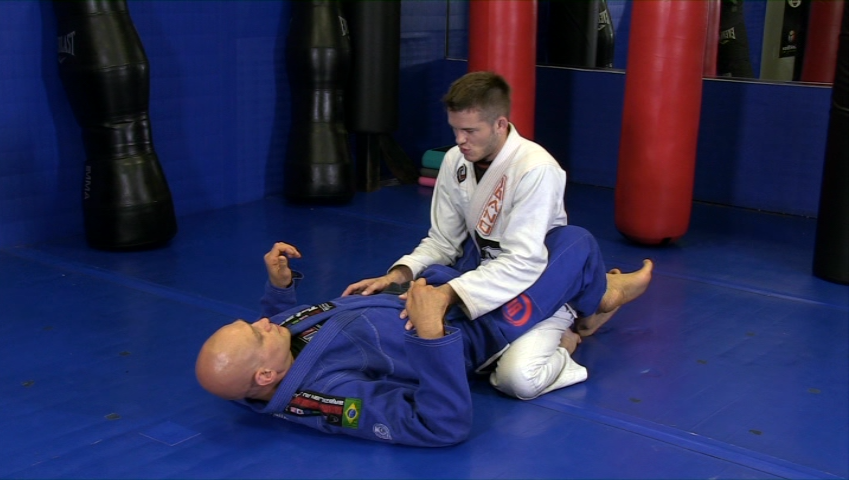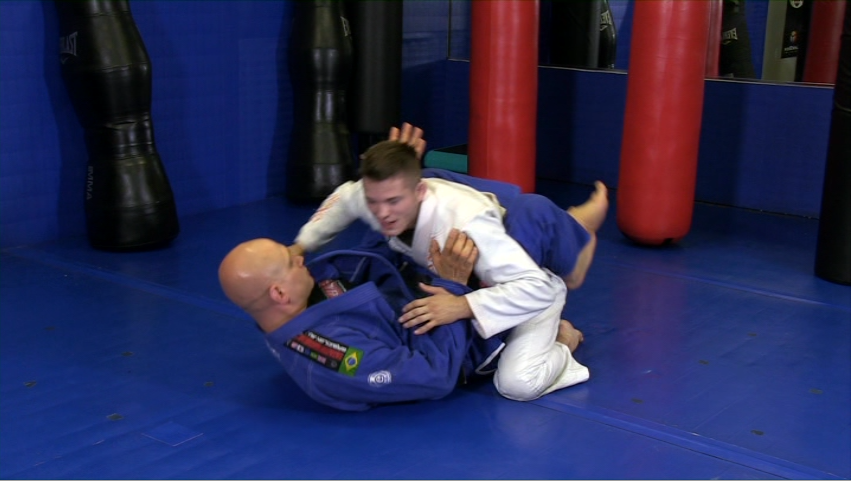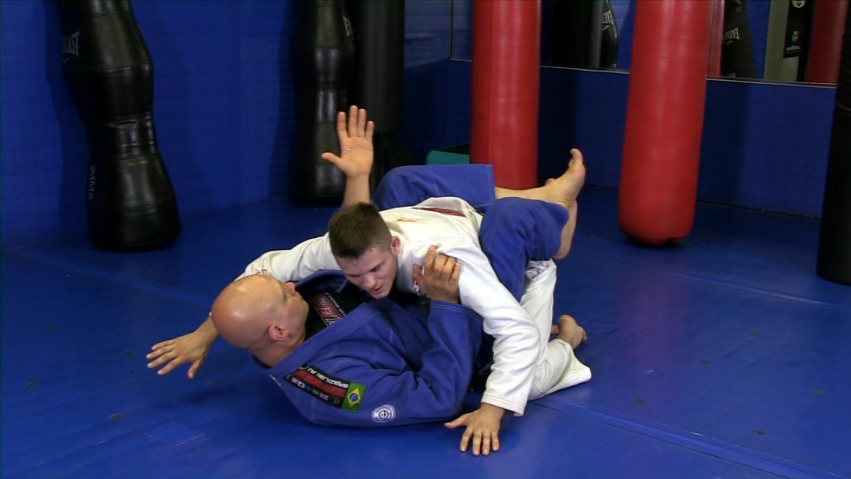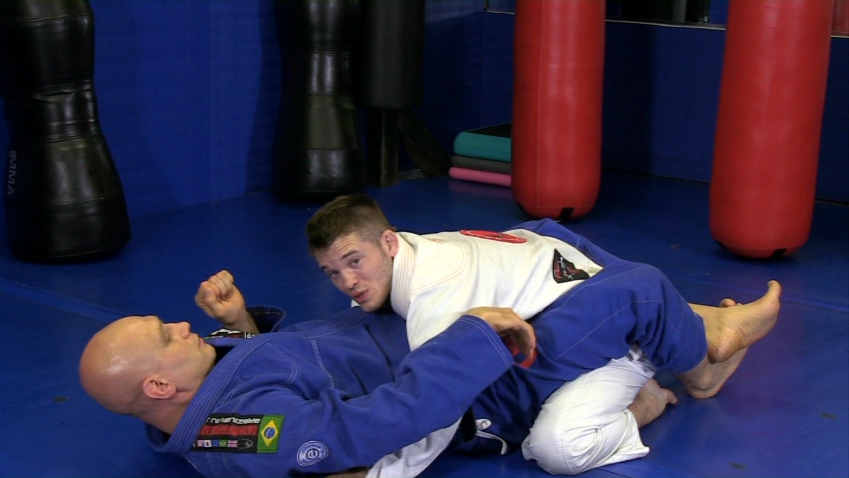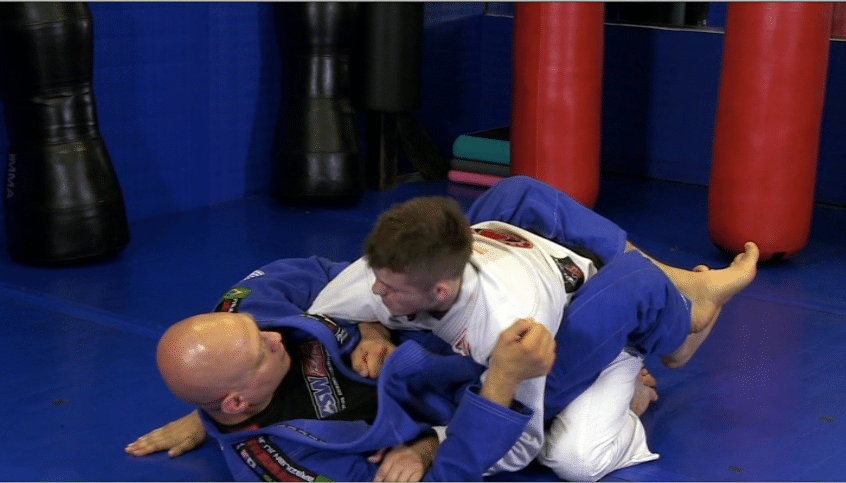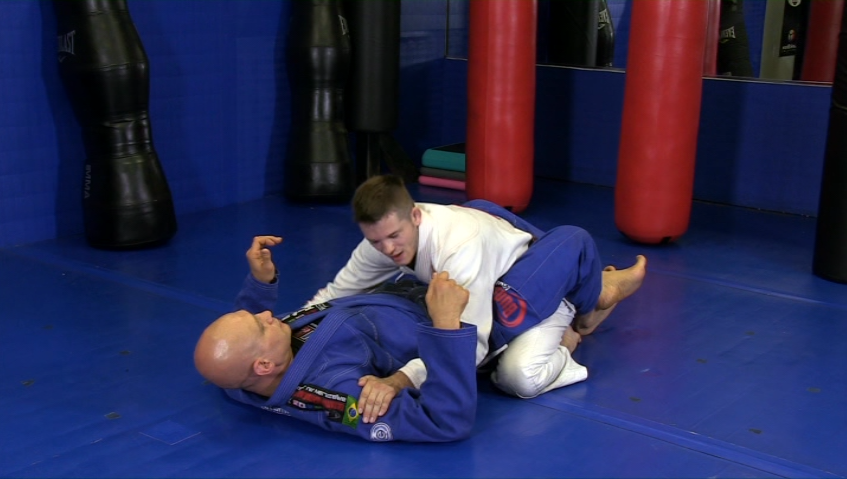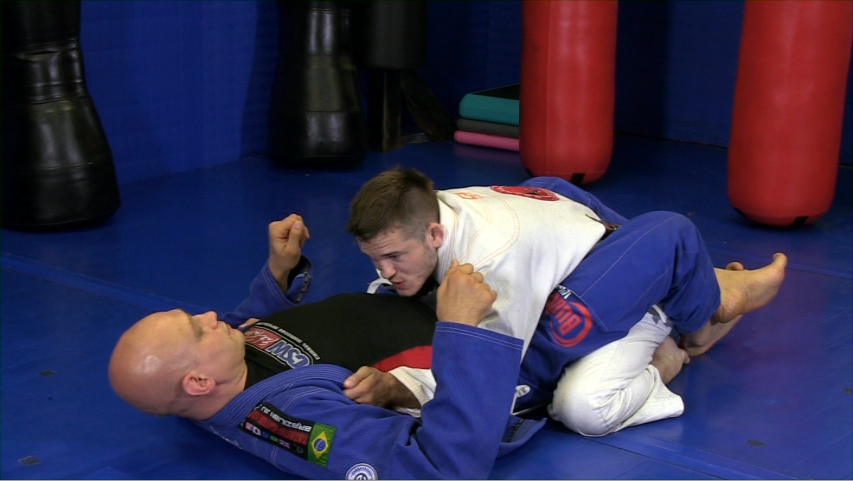Posture, posture, posture… Everyone talks about posture as THE solution to staying out of trouble in the guard. Every guard pass ever taught starts out with, “First, make posture in the guard.”
But the trouble is that your opponent knows this too. If you’re in his closed guard, and if posture is good for you, then posture is bad for him. So guess what? He’ll work like crazy to disrupt, destroy, and break down your posture whenever he’s got you in the closed guard.
(An intro to breaking posture using your arms and legs is covered in the video portion of my article called What is the Closed Guard?).
The problem of maintaining posture is even worse when you’re grappling with some big gorilla who wants to reach up, grab a hold of your gi, and pull you forward using his superior strength. Which makes it especially appropriate that Brandon Mullins is helping me in today’s article. Brandon competes at 118 lbs, which is almost 100 pounds lighter than me, so his techniques really need to work if I’m not just going to muscle him around.
So here’s one of the most common problems you’ll face while trying to make posture in the closed guard. Let’s say that you’re in Brandon’s position (white gi) in the photo sequence below…
You start out in the closed guard, possibly facing someone much larger than yourself. You’re doing your very best to maintain good posture, but…
…he pulls with his arms and his legs (bringing his knees towards his face) to break your posture forward.
To avoid faceplanting you instinctively spread your arms out to create base. But this is exactly what your opponent has been waiting for!
Whenever you’re in the closed guard with your hand planted on the floor (as Brandon is doing in the photo above) you’re instantly vulnerable to Kimura armlocks, reverse armlocks (aka the armcrush), hip bump sweeps, and many other highly effective attacks.
One of the easiest, fastest and most annoying things your opponent can now do is tie up one of your arms with an overhook. You see this all the time, both in gi, nogi and MMA competition, even at high levels.
In the photo above I’m overhooking Brandon’s right arm with my left arm. If I wanted to make it tighter I could even grab his far (left) lapel with my left hand, which would really lock things in place.
If your opponent has the overhook from the closed guard and knows how to use it then you’ll constantly be in danger from some highly effective chokes and sweeps. Plus once the overhook is applied it can be really hard for you to get your arm free and make posture again. You can get stuck in this position for a looooonnnnnnggggg time until you manage to get out.
What’s the solution to all this overhooking and posture-breaking nonsense? It really comes down to programming your brain NOT to give your opponent an easy underhook!!
You’re not always going to be able to maintain posture. Your opponent will sometimes be able to pull your forward on top of him. These things are just facts of life on the grappling mat.
But as soon as you feel your balance being broken forward resist the urge to base out on the floor.
Instead, as you’re falling, make sure that your hands go directly to your opponent’s biceps.
When you’ve established biceps control he can’t easily wrap your arm to apply that annoying overhook. You’re also pinning him flat and making it difficult for him to get an angle on you. And you’re reducing his ability to get a deep grip on your collar (the defense to which we’ll cover in a future post).
Above is an illustration of what double biceps control looks like. Brandon is blocking my movement by placing both his hands on my upper arms.
A variation of double biceps control that works very well in gi-based BJJ training is double lapel control – illustrated by Brandon in the white gi above. Here you transition from your initial hand placement on the biceps to gripping the lapels on each side and then jamming your fists into his armpits. This is an uncomfortable position for your opponent and makes it even harder for him to dislodge your hands.
The takehome message here is this: never put your hands on the floor when your opponent breaks your posture forward in the closed guard. Train your hands to shoot straight for his biceps instead, and you’ll prevent a ton of annoying closed guard problems.
If you liked this article then here are a few more links that you might want to check out.
More posts about posture in BJJ
The Brandon Mullins ‘How to Defeat the Bigger, Stronger Opponent’ Instructional Mobile Apps
The post A Easy Way to Stay Out of Trouble in the Guard appeared first on Grapplearts.

